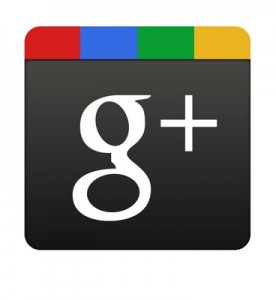Google +: The Good, the Bad and the Ugly

[a guest post by Aaron Strout]

The Good One of the main reasons that Google + is taking off the way it is is because they seem to have gotten the friending/privacy/social graph right via a convention called Circles. Circles are powerful for a few different reasons:
- The circles come pre-set (although you can customize) so right out of the gate you can start adding people to buckets titled, "Family, Friends, Acquaintances, Following and Work." In order to connect with someone (the equivalent of following or friending), you need to put them in a circle.
- As a result of the bucketing connections into circles requirement, all of your connections end up in pre-defined groups. This allows you to decide which circle or circles you want to share with every time you post. This is a big win on the privacy front.
- Unlike Twitter lists or Facebook Groups, you can not only view your circles by different criteria including first name, last name, relevance and recently updated but users also have the option to see only a stream from a specific circle or to view that circle's activity in a separate tab.
Although I haven't tried them yet, I do like the concept of the Hangouts on Google + or the ability to spontaneously create group chats (text and video) with your connections. You can add and subtract people from these groups on the fly giving you flexibility.
Probably the biggest opportunity for Google + is its ability to meet the need of social for business. If you think about it, Facebook is much more for personal interactions than business interactions (although important for businesses to play a role). LinkedIn is for business but still isn't particularly social. Twitter falls somewhere in between but doesn't allow for the robust conversation threading and image/video sharing that Google + and Facebook do. Even better, Google + has the opportunity to be the social glue that sits between all of Google's apps and tools (Docs, Maps, Blogger, Picasa, etc.) This creates all sorts of internal and external collaboration opportunities over time.
The Bad Two of the biggest knocks on Google + so far are the lack of groups (one of the more valuable features of Facebook) and the awkwardness around multiple people mentioning a post (this would be the equivalent of re-tweeting on Twitter). In the first case, I'm guessing that Google will fix this soon by adding in a type of public or private circle that users can administer. On the latter, I'm also assuming that a solution like collapsing posts in one's stream that share redundant information so that they take up less room makes sense.
Lack of business pages also falls into the "bad" category. Companies like Ford and NPR News have been allowed in to test the service but as of yet, Google + is not yet open for companies to sign up. While many consumers may consider this an actual plus, I know of a lot of companies that are champing at the bit to get in and start to test this shiny new tool. We all know that Google will eventually allow for business usage but hopefully they don't wait too long.
The Ugly I'm happy to report that there really isn't that much ugly with Google +. The few things that would fall in this category are more nuisances than major flaws. For one, the mobile app (just made available to iPhone users today) still doesn't allow for notifying one's connections using the "+" sign (similar to the @ sign in Twitter and Facebook). This applies to both posts and comments. Instead, it looks up gmail addresses and other search garbage.
Are you using Google + yet? If so, what has your experience been? And will you plan to use it instead of Facebook and Twitter or as a complementary service?